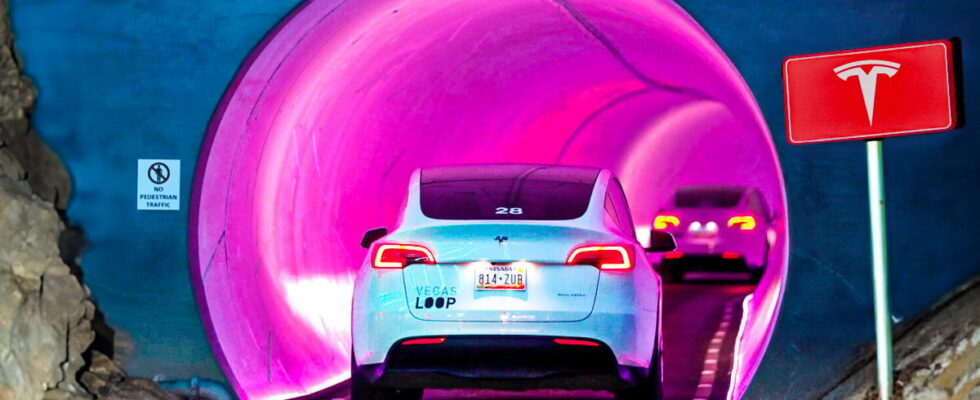In Las Vegas, Elon Musk and his Boring Company dug a tunnel under the city: the Vegas Loop. A kind of beginnings of the famous Hyperloop project. The idea: to be able to cross part of the city underground, in autonomous Teslas, at high speed, to avoid traffic jams. Reality ? Disappointing, and I will explain why with my experience there.
You must have probably already heard of the famous Hyperloop project led by Elon Musk and many other companies such as Virgin and SNCF. The idea goes even further than the Vegas Loop we tried. This involves transporting passengers underground, at a speed of more than 1,000 km/h, in autonomous capsules, using electromagnetic levitation in vacuum tunnels.
The objective is to connect the major capitals together faster than a TGV or an airliner! For example, getting to San Francisco from Los Angeles would take just 30 minutes, compared to about 6 hours by car, using up to 10 times less energy than flying.

With Hyperloop, Elon Musk wants to revolutionize public transport, and made the patent public in 2013. But to achieve this, the billionaire realized that it was also necessary to revolutionize the creation of the tunnels necessary for the Hyperloop. This is how the Boring Company was born: a company whose specialty is creating tunnel boring machines (the machine), but also digging tunnels and operating them. Like in Las Vegas with the Vegas Loop.
Video test
Loop versus Hyperloop: nothing to see, or almost
We are therefore far from the revolution promised by the Hyperloop (which, in any case, seems abandoned). But we are entitled to a taste, which the Boring Company calls “Loop”, without the Hyper prefix. So we have the same tunnel… but not at all the same mode of transport. The idea is to ultimately use electric Teslas, in autonomous driving mode, that is to say without a driver, at a maximum speed of 240 km/h.
Since there are no obstacles in a tunnel, one might say that it is quite simple. Especially when we know that Tesla offers a fully autonomous driving mode in the United States, the famous FSD (for Full Self-Driving), which we were able to try.

But, in practice, a different score is played. And this is what we were able to experience during our different experiences of the Vegas Loop in January 2024. For the moment, the tunnel is quite short, and mainly serves the different entrances to the immense convention center (where a game takes place of CES) as well as a hotel. So we took it several times to get from one venue to another at CES.
A driver, but which driver?
On this occasion, the trips were free. Normally, you have to pay five dollars each way. Each journey is ultra-fast: allow around 1 minute between each station. A bit like a Parisian metro… except that here, the car does not stop at each station: you tell the driver your destination, and he will take you there. At a maximum speed of 30 MPH, or approximately 48 km/h. Not very fast!
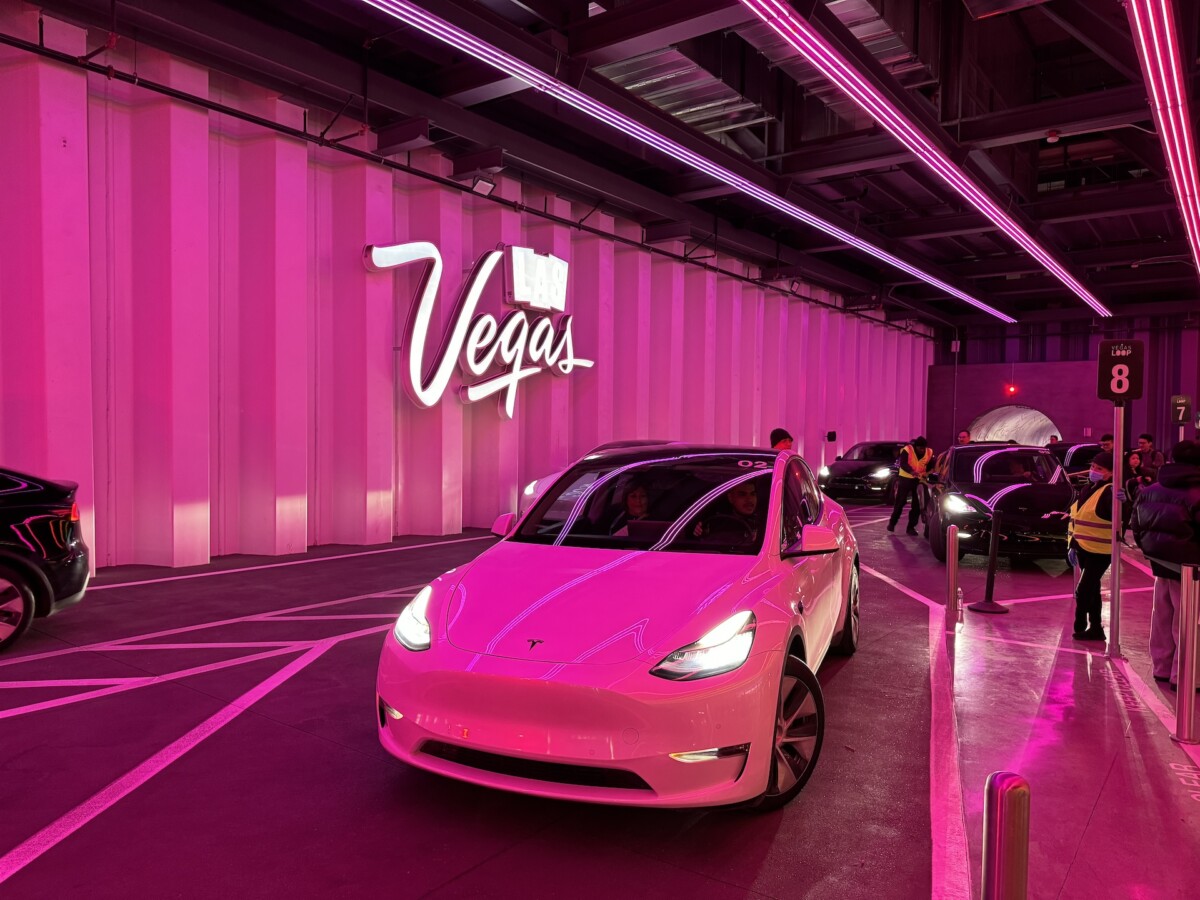
Oh yes, are you surprised by the presence of a driver? Me too. They are not allowed to use semi-autonomous driving functions (adaptive cruise control or lane keeping), and must therefore drive cars all day, in a narrow tunnel which does not really leave room to error of judgment.
Elon Musk promises that cars will become autonomous in the coming months, and it’s unclear why this hasn’t been done sooner. Everyone would gain: potentially faster journeys (with better flow management), less difficulty for drivers (it would only be necessary to monitor the driving of the car) and a lower cost (in the case where the presence of drivers would no longer be required).
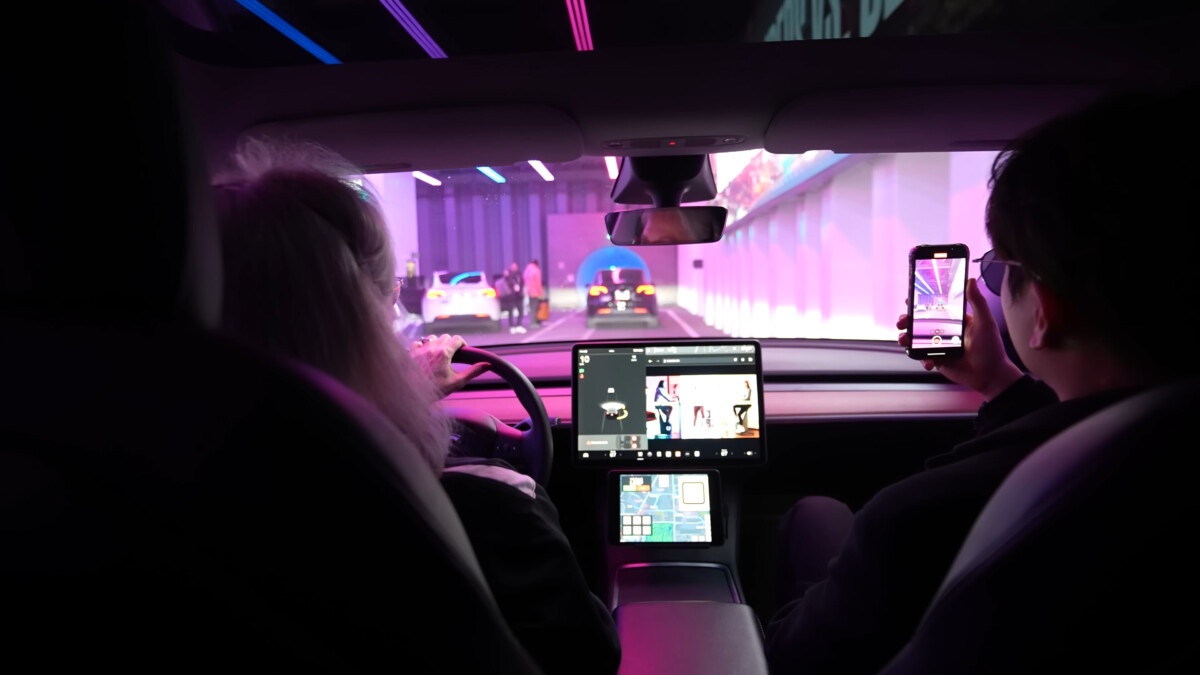
Google managed to do this well in San Francisco, in the crowded streets of the city as our colleagues from Numerama were able to test. So why not Tesla in tunnels designed for this very specific use?
Traffic jams that could be avoided
During rush hours, we also feel that this idea of cars in a tunnel is not necessarily the best. For what ? Quite simply because the traffic jams that Elon Musk wants to avoid with the Boring Company are created within his tunnels.

And yes, on several occasions we had to wait a few dozen seconds for the places in the station to become available so that our driver could park and let us get out of the car. Before picking up other passengers who were waiting on the platform to go to another station.
We see here again that cars are not really adapted to this type of situation: the doors do not open wide unlike a bus, the passenger compartment is cramped, making the action of getting in much longer than that of a bus. entering a metro for example. We saw Model 3, Model Y, but also a large Model X, with an accessory on the towing hook allowing you to transport a wheelchair for example. The problem is that the famous Falcon Wing doors take a little time to open and close. This then worsens the waiting time in traffic jams for other users of the service.
A taste of the Hyperloop
Ultimately, it is a technological demonstration to highlight the Boring Company, while waiting for the tunnel boring machines to be running at full speed to build Hyperloops across the planet. But will this really happen?
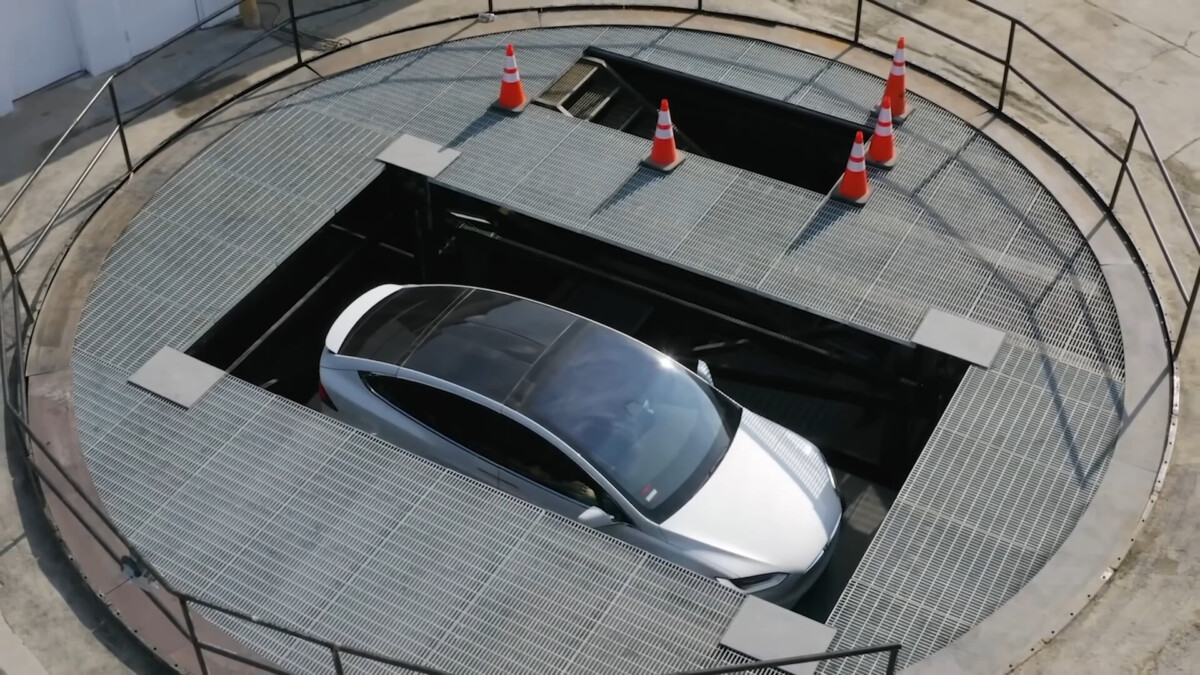
We hope, but we have a slight doubt. Hyperloop One, Virgin’s Hyperloop project has just been abandoned. There are still several companies working on projects, but they are still in the theoretical stage. In Europe, the transition to practice should be carried out in March 2024, in the Netherlands, with a functional demonstrator only 400 meters long: the Hardt Hyperloop.
So yes, the Vegas Loop is better than a car ride on the famous congested Las Vegas Strip. But is it really better than the same journey made in more conventional public transport, such as the metro or aerial tramway (which already exists in Las Vegas)? Not sure, no. At least, not for the moment, with cars that are not autonomous and whose cabin shape is poorly suited to transporting people.
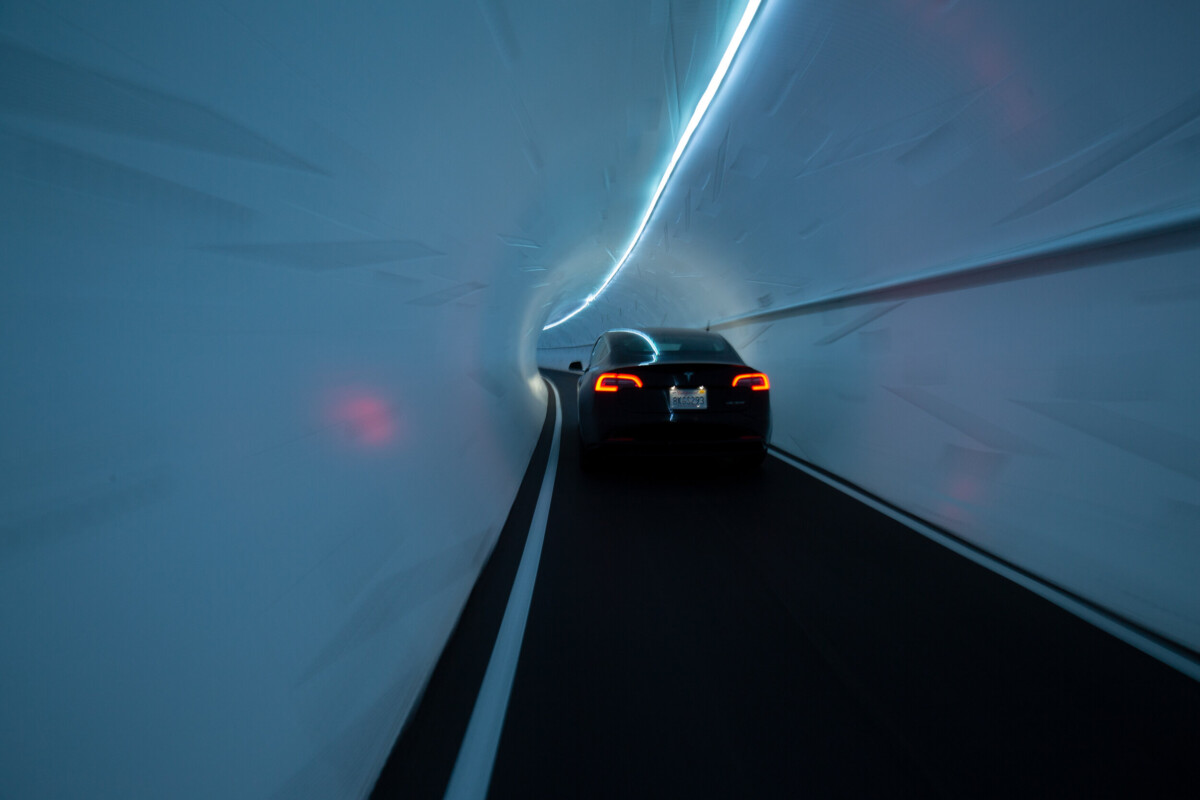
But the project is far from finished. Ultimately, all hotels on the Strip will be served by the Vegas Loop, with 81 different stations, making it possible to operate two tunnels (one in each direction) with a total length of more than 100 km, and 90,000 passengers per hour expected. With Tesla’s future and hypothetical autonomous Robotaxi, it would already make a lot more sense.
